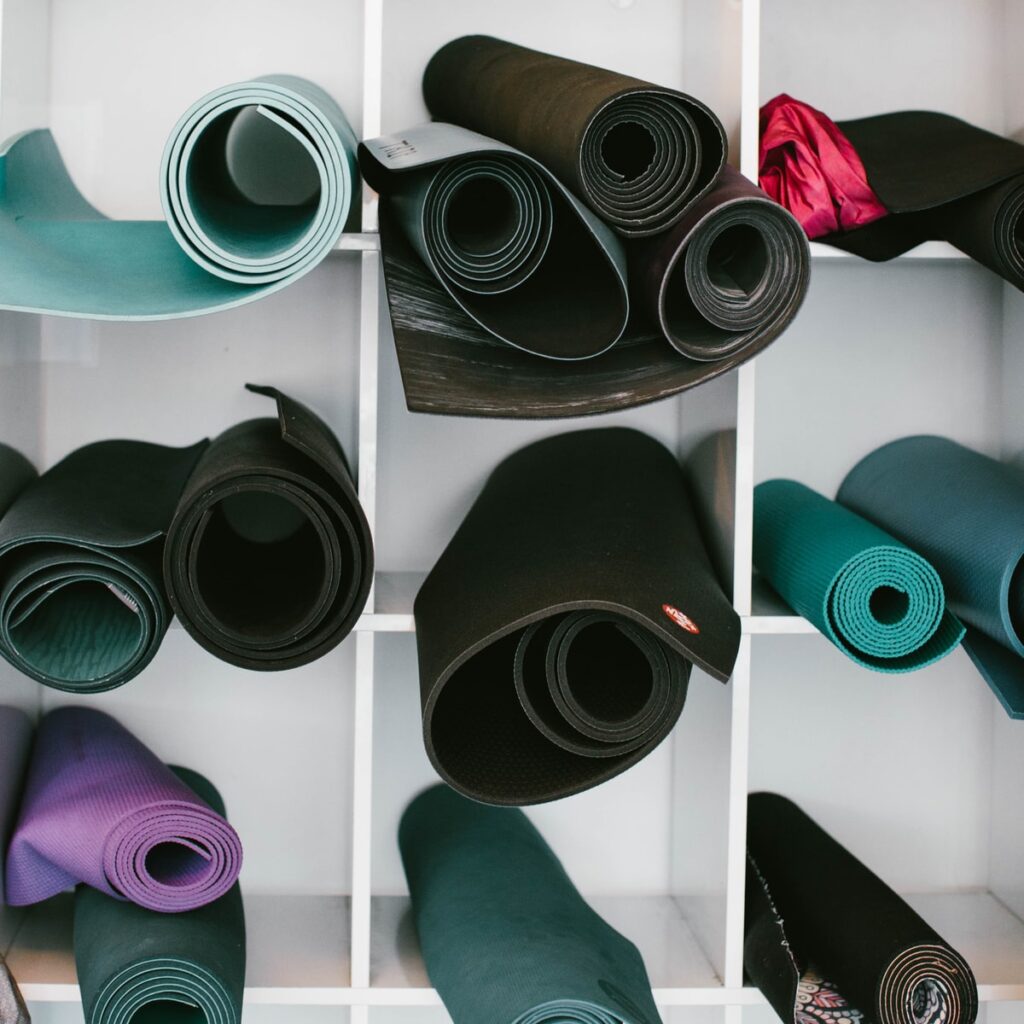I may get commissions for purchases made through links in this post. This helps me to offer you free recipes and blog posts.

Cork and latex are both popular materials used in the construction of yoga mats. Each has its own unique set of characteristics and benefits, so the choice between the two will depend on your personal preferences and needs.
Here are some key differences between cork and latex yoga mats:
- Material: Cork yoga mats are made from the bark of cork oak trees, while latex yoga mats are made from rubber.
- Grip: Cork has a natural, grippy texture, which can be beneficial for balance and stability during yoga practice. Latex is generally less grippy than cork, but some latex yoga mats have a textured surface to improve grip.
- Durability: Latex is a more durable material than cork, and latex yoga mats are less prone to tearing and wearing out over time.
- Eco-friendliness: Cork is a sustainable and renewable resource, and cork yoga mats are often marketed as being more environmentally friendly than latex mats. However, latex can also be sourced in an environmentally responsible manner, so it’s worth considering the specific production practices of the mat you are considering.
- Comfort: Some people find cork yoga mats to be more comfortable than latex mats, as cork has a softer, more cushioning feel. Others prefer the firmer, more supportive feel of latex.
Here are a few more points to consider when choosing between a cork or latex yoga mat:
- Price: Cork yoga mats tend to be more expensive than latex mats, due to the cost of sourcing and processing cork.
- Cleaning: Both cork and latex yoga mats can be wiped down with a damp cloth and mild soap. However, cork may be more difficult to fully clean if it becomes soiled, as the pores of the cork can trap dirt and bacteria. Latex, on the other hand, can be easily washed with soap and water.
- Allergies: Some people may have an allergy to latex, in which case a cork yoga mat would be a better choice.
- Weight and portability: Cork yoga mats are generally heavier and thicker than latex mats, which can make them less portable. Latex mats are typically lighter and more compact, making them a good choice for people who travel with their mat or need to carry it to and from class.
- Performance: Both cork and latex yoga mats can provide a stable and supportive surface for practicing yoga. However, the specific performance characteristics of each type of mat may vary depending on the thickness, density, and texture of the material. For example, a thin, firm latex mat may be more suitable for activities that require a lot of balance and stability, while a thick, cushioned cork mat may be better for restorative or yin yoga practices.
Ultimately, the choice between a cork and latex yoga mat will depend on your personal preferences and needs. It’s a good idea to try out both types of mats to see which one works best for you.
latex yoga mats
cork yoga mats
